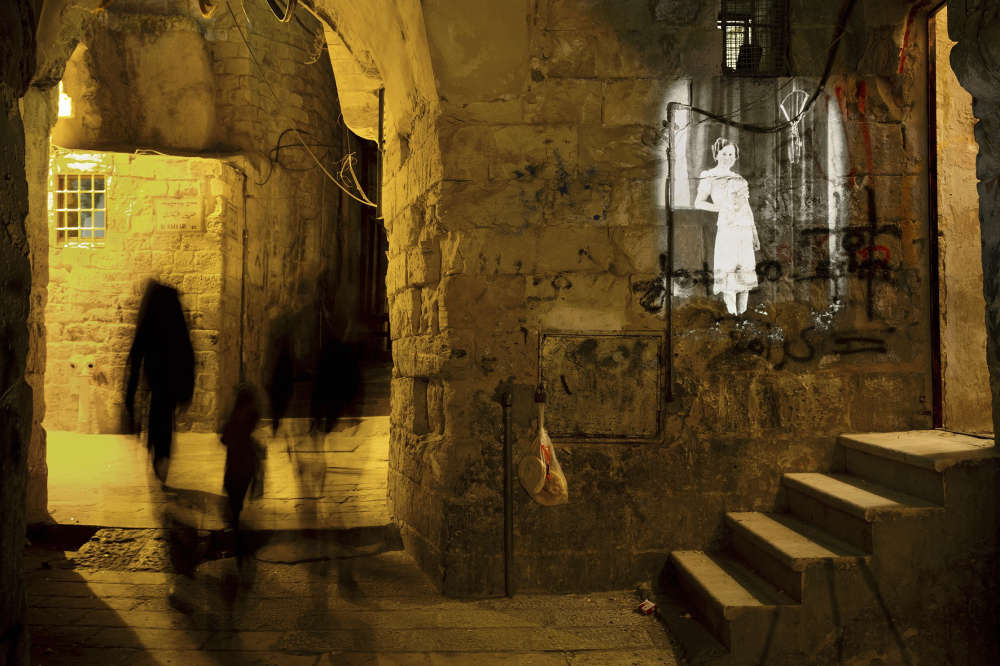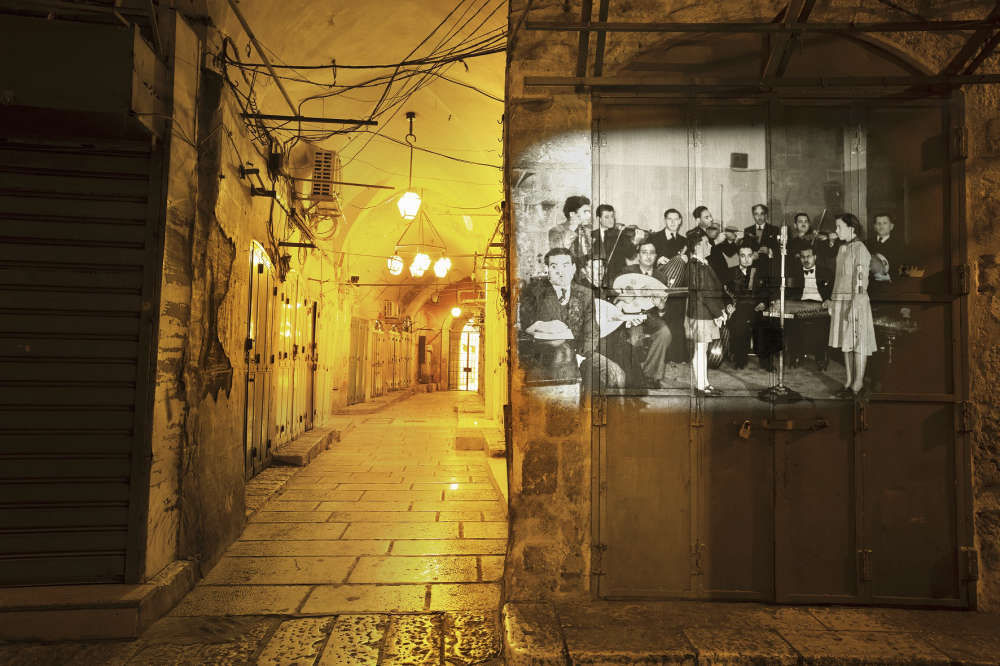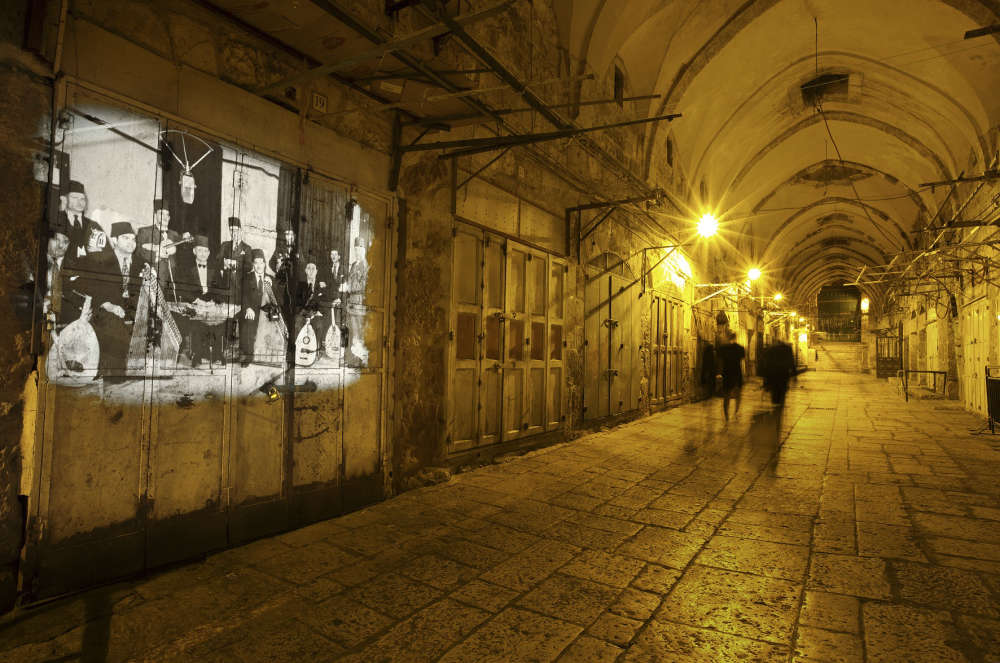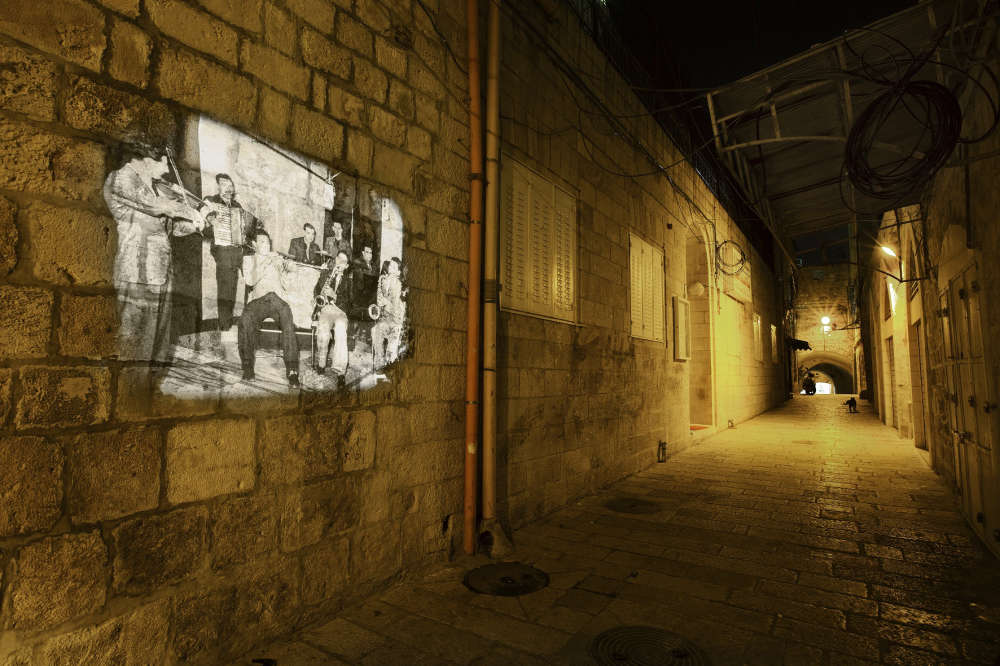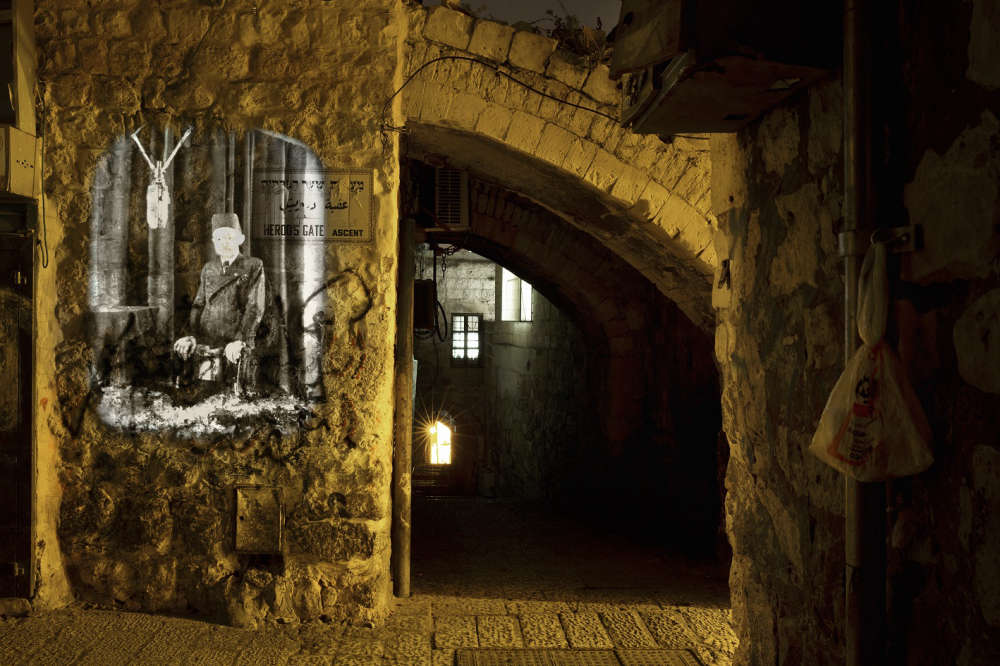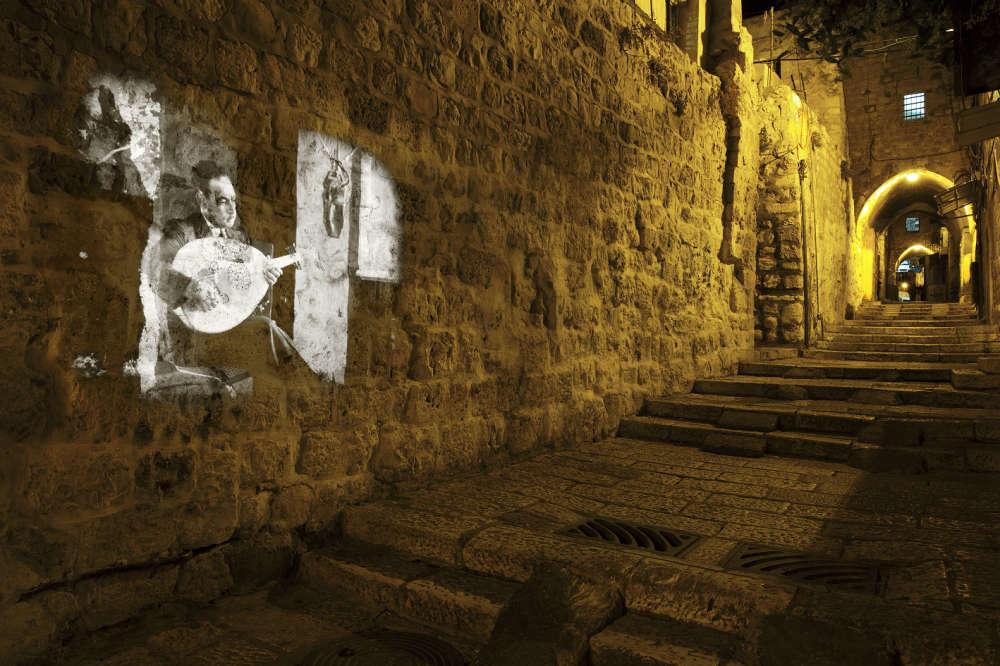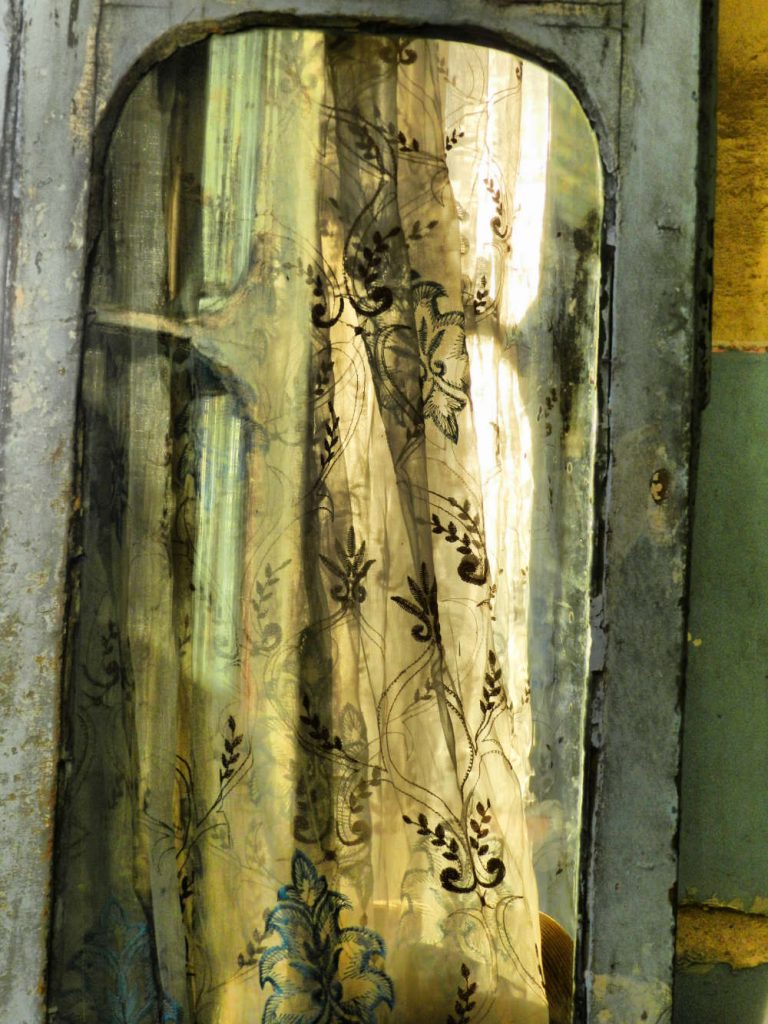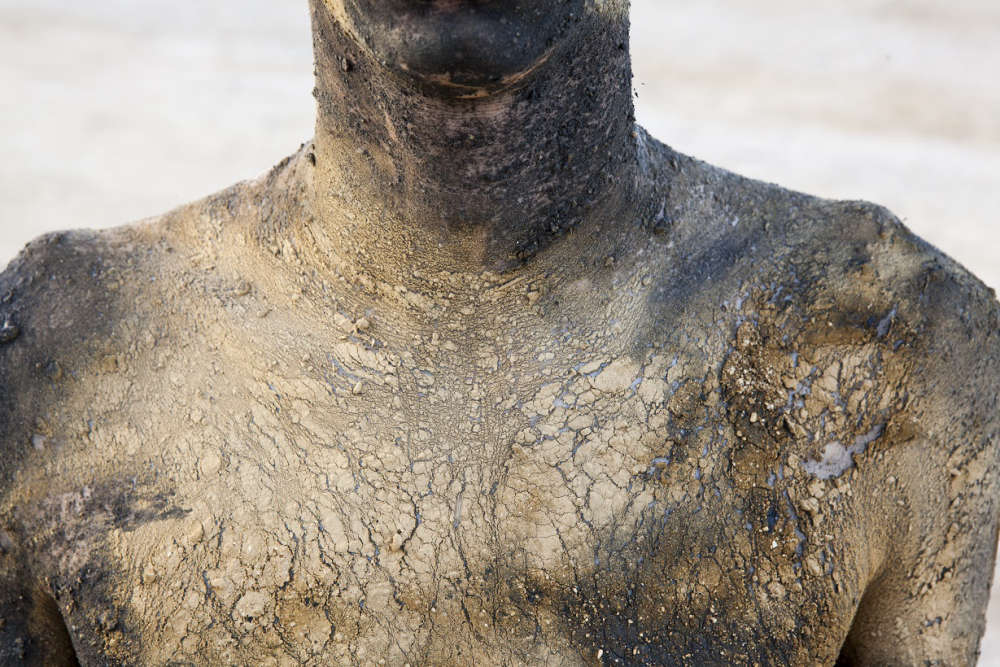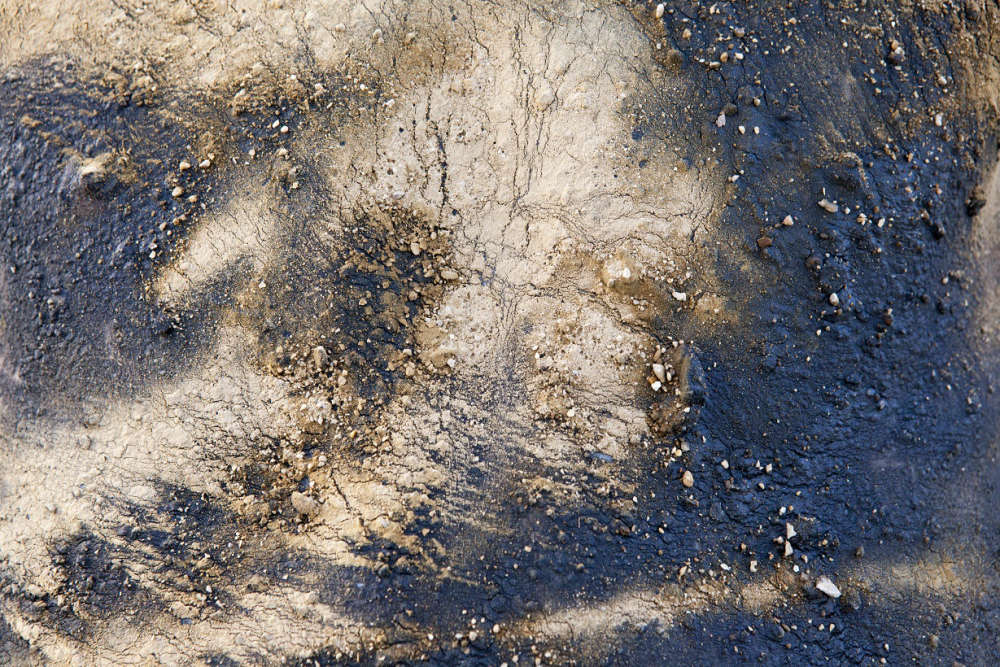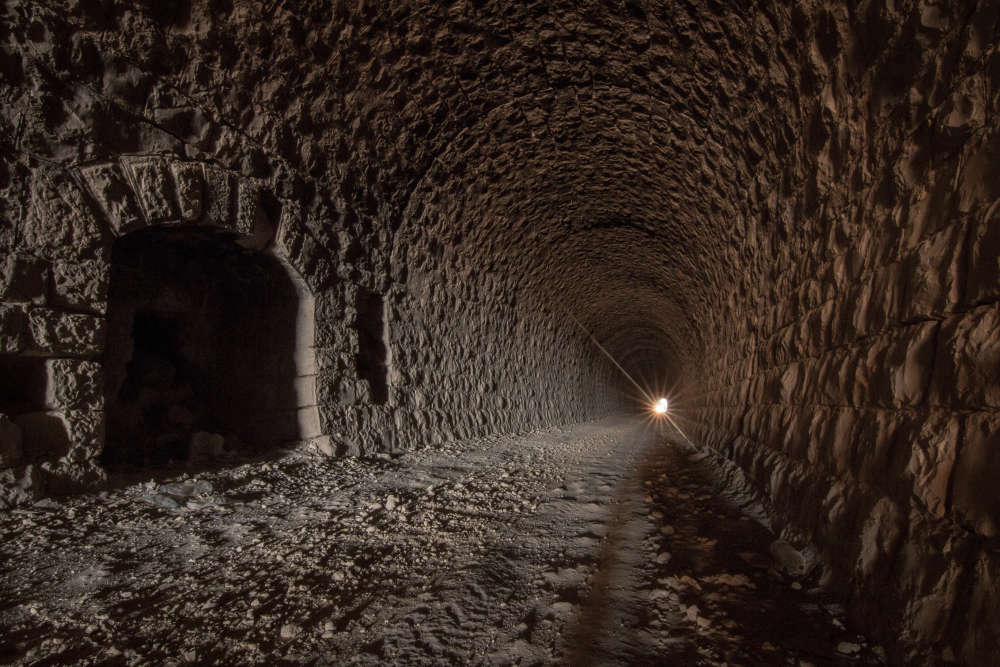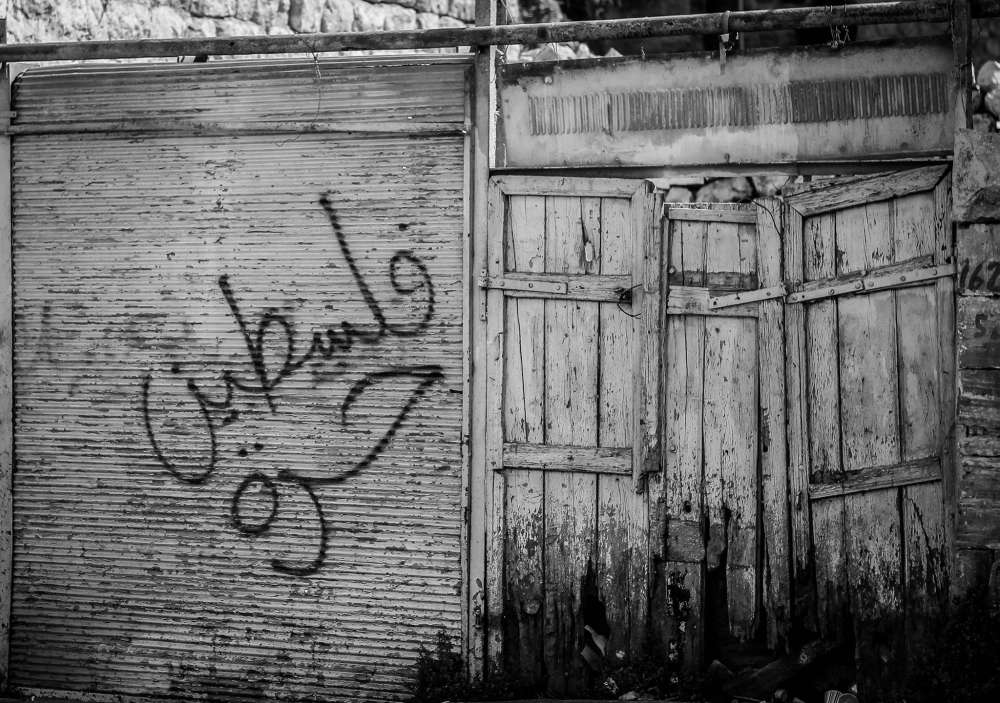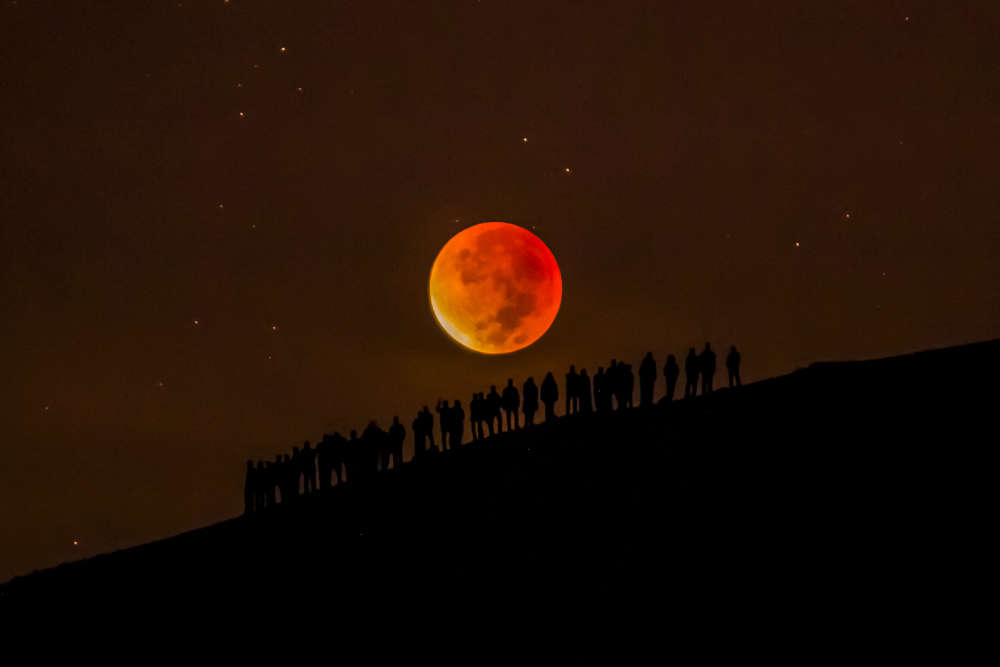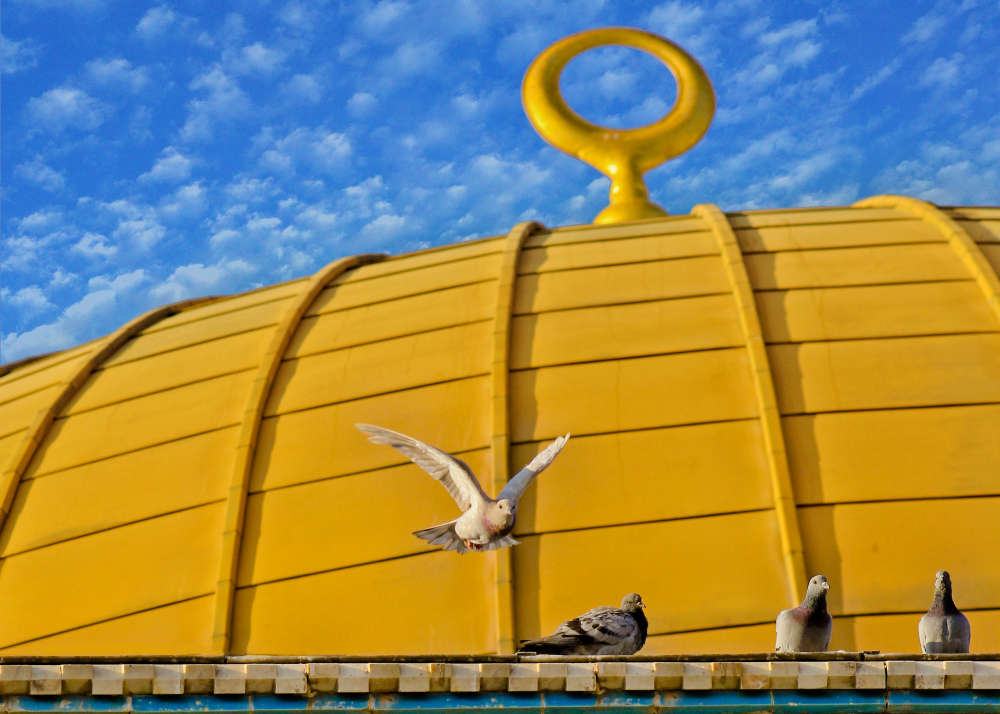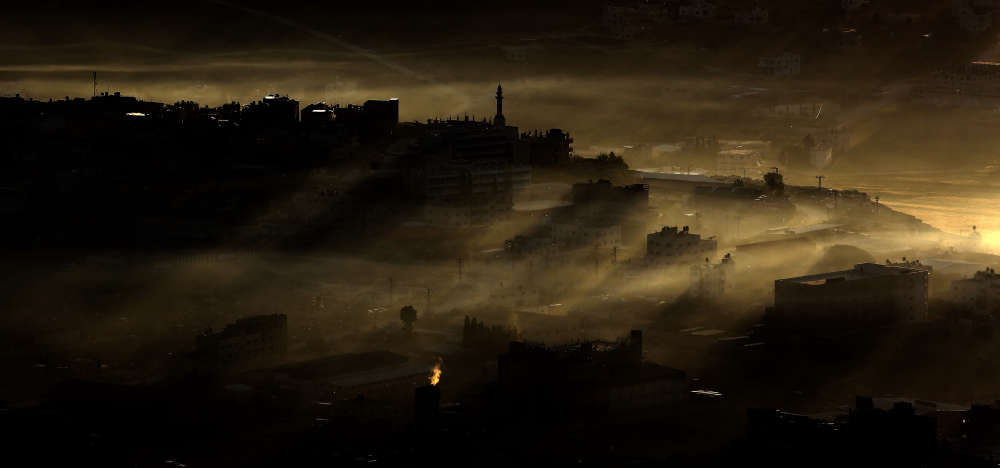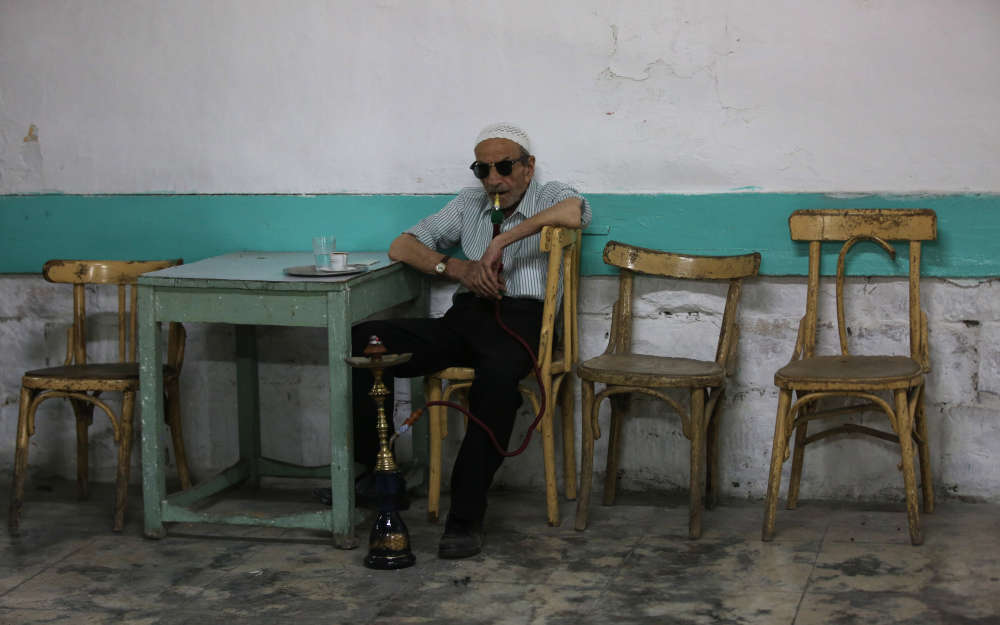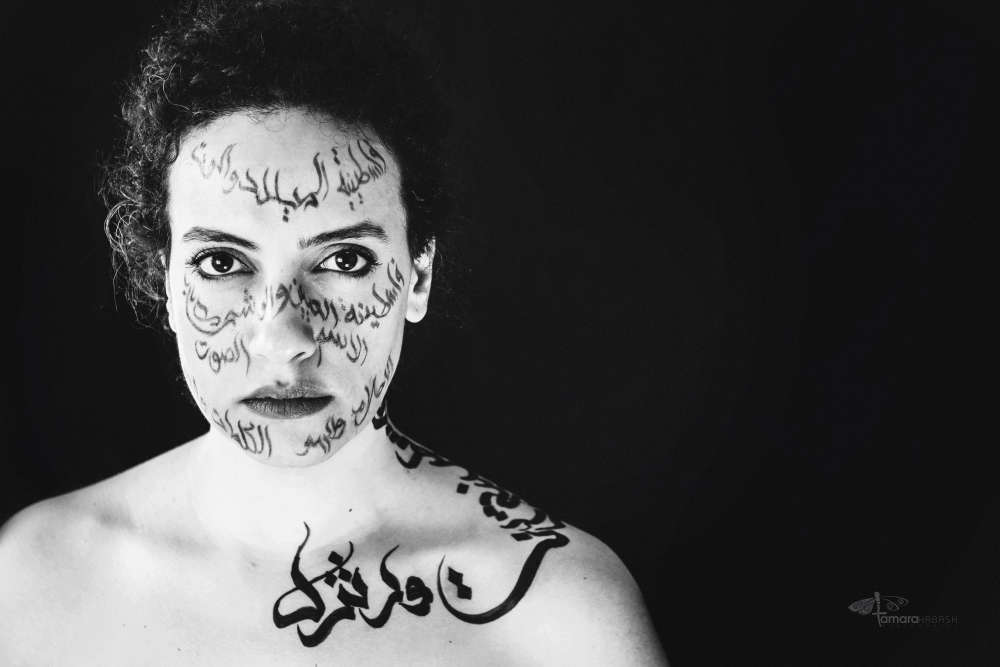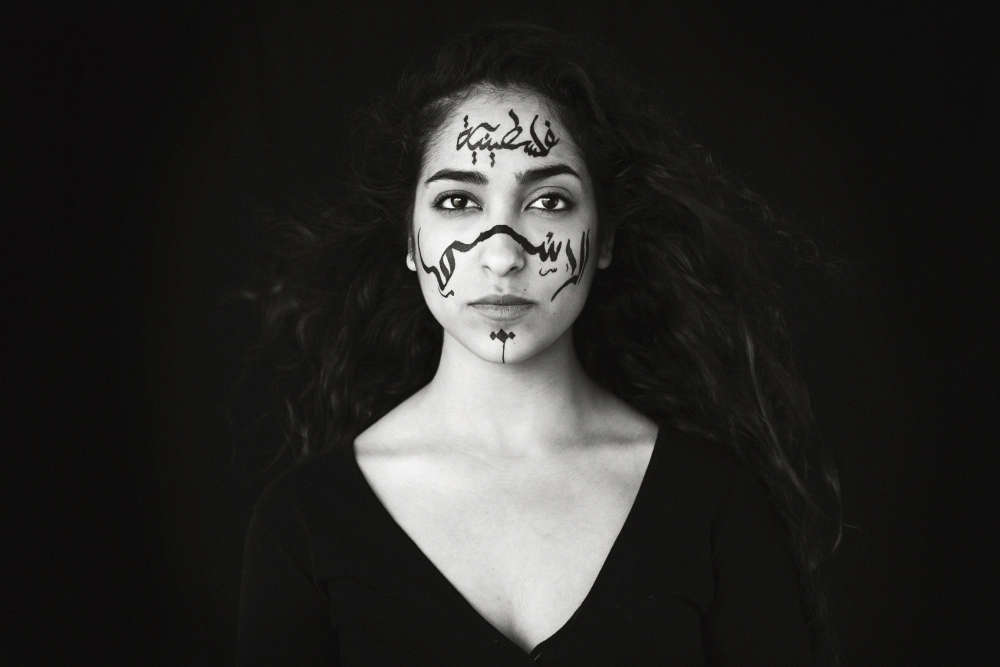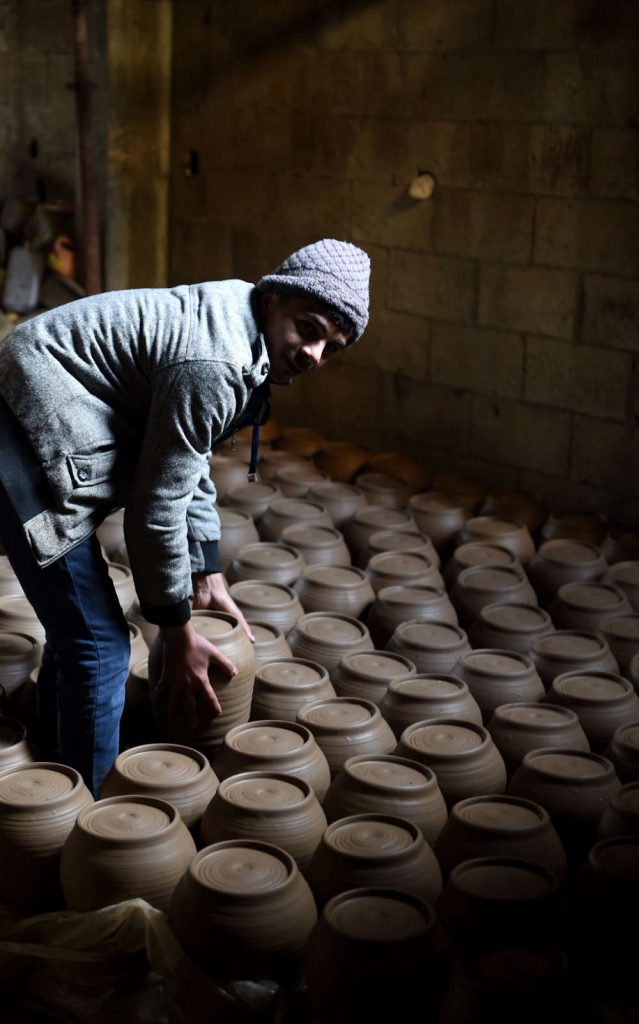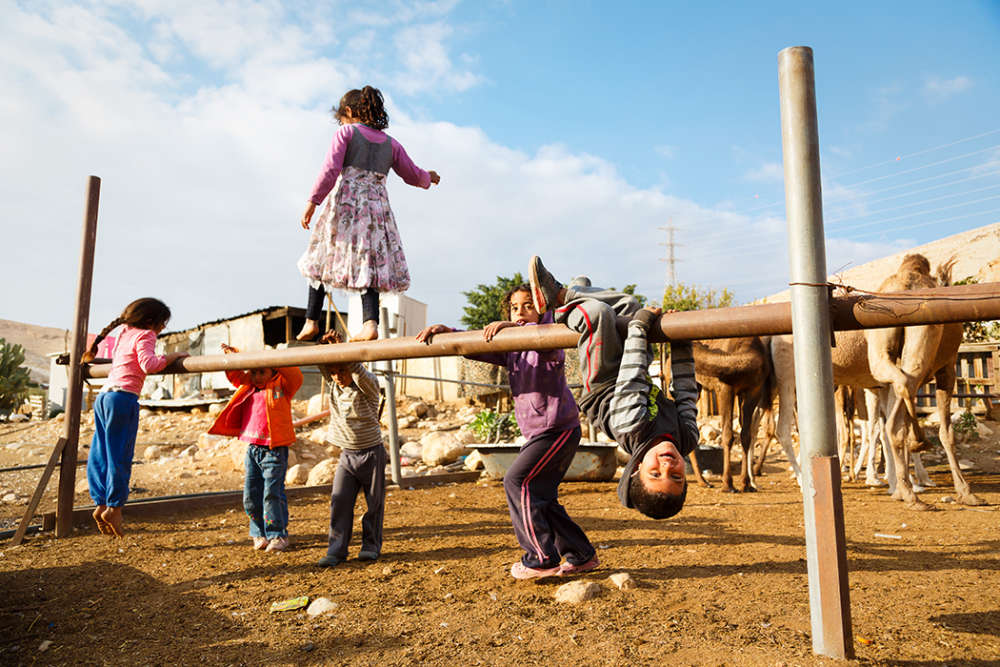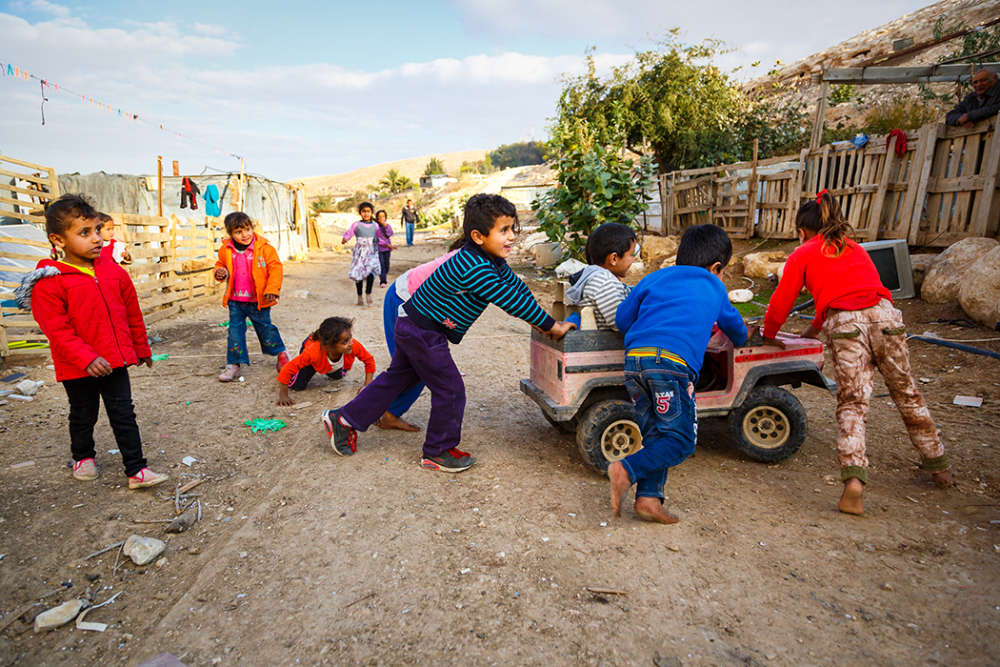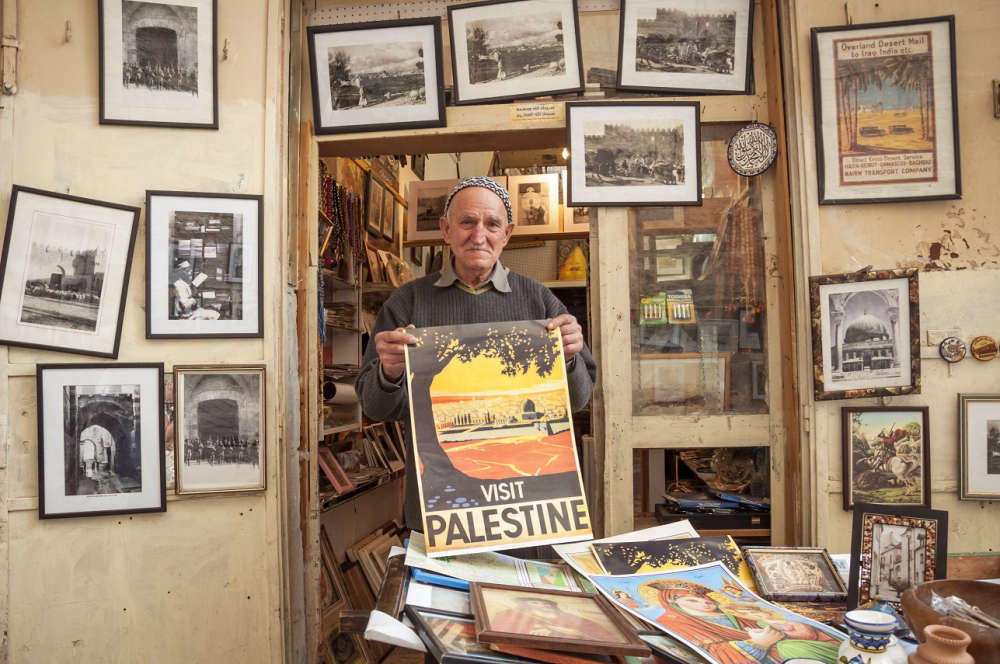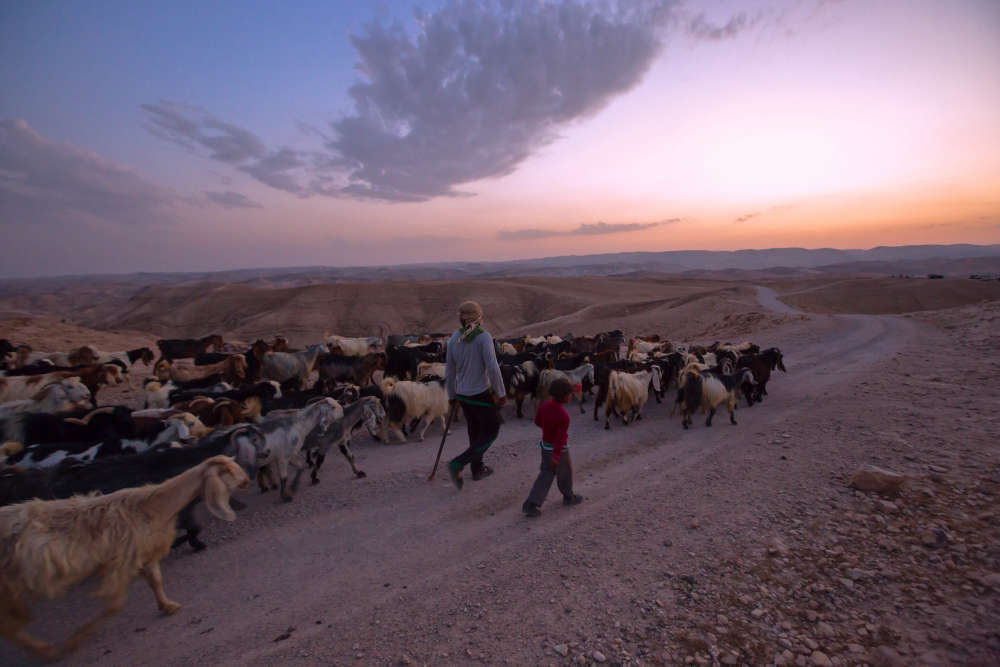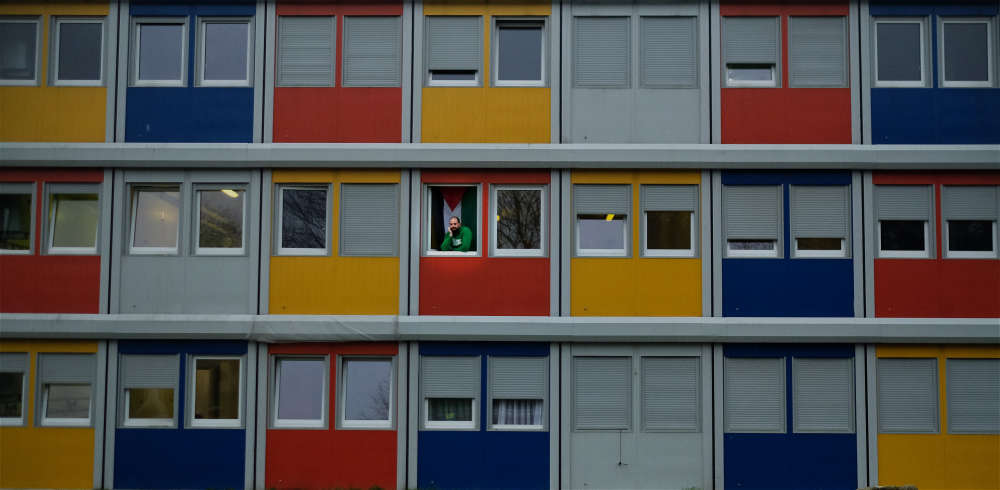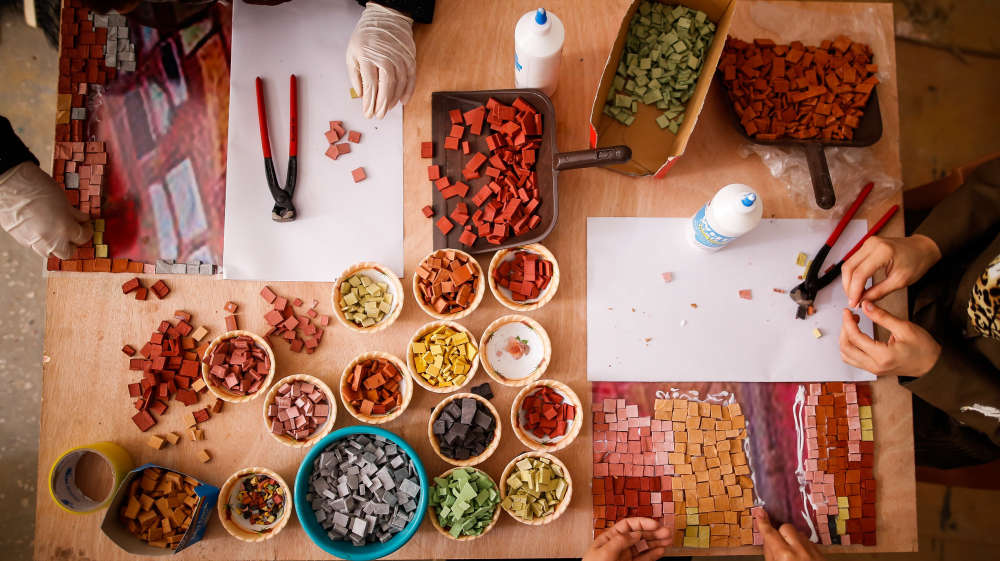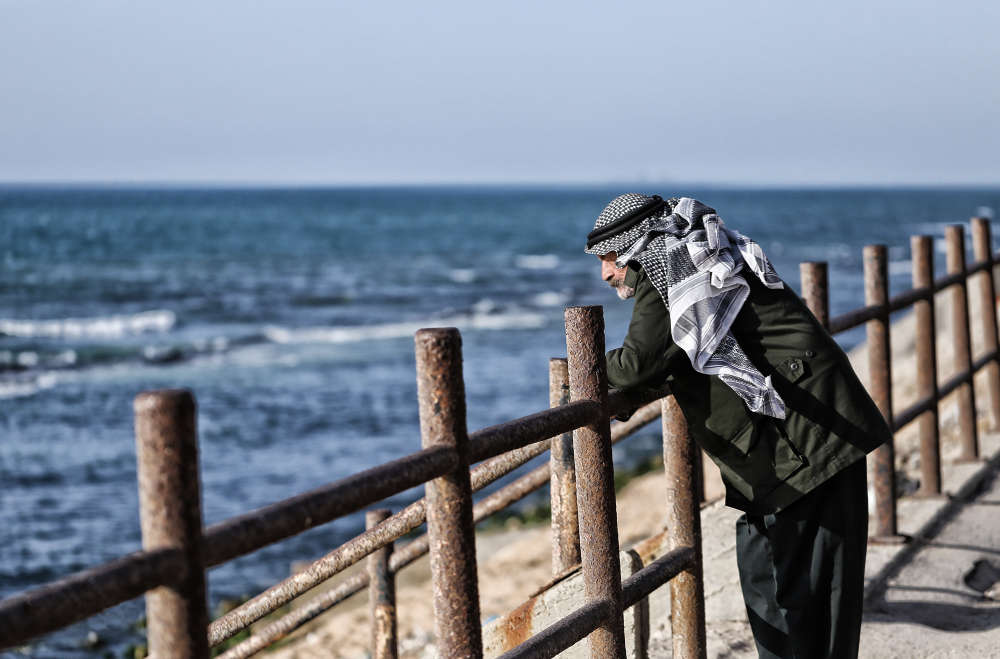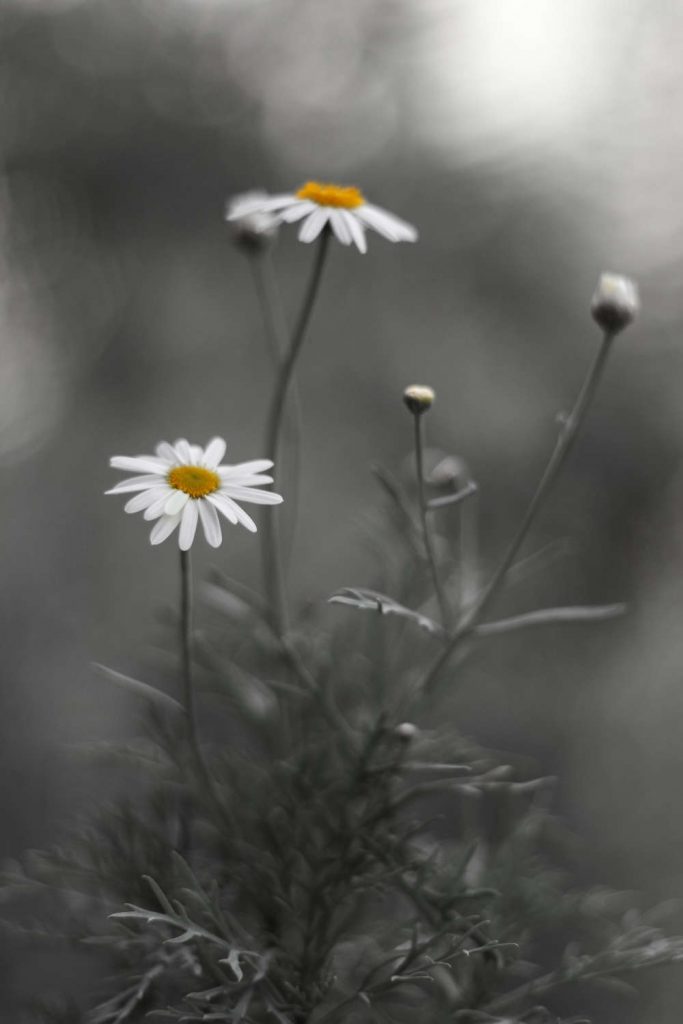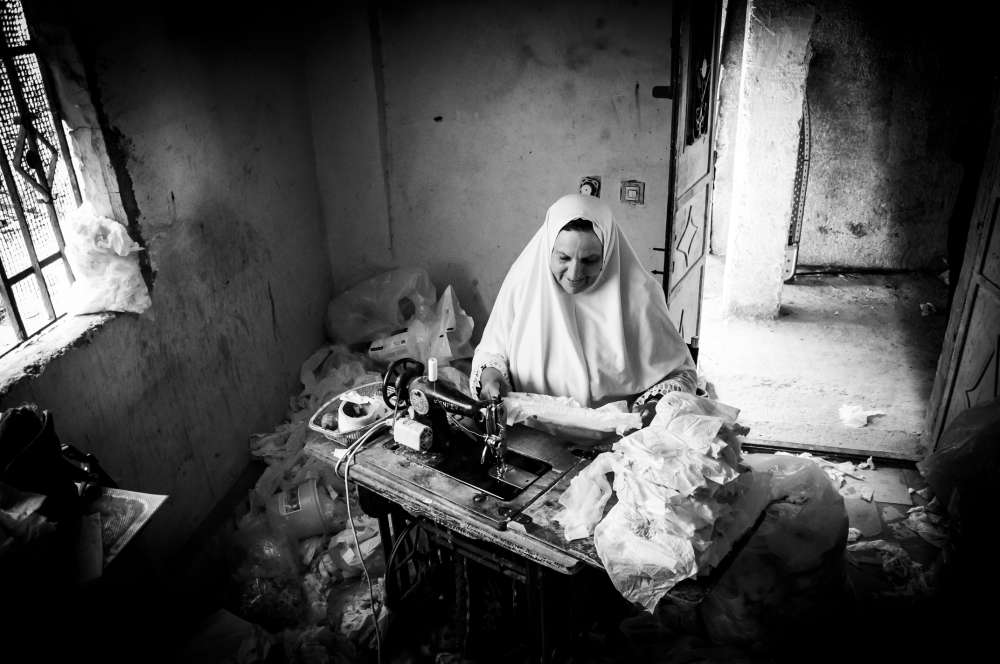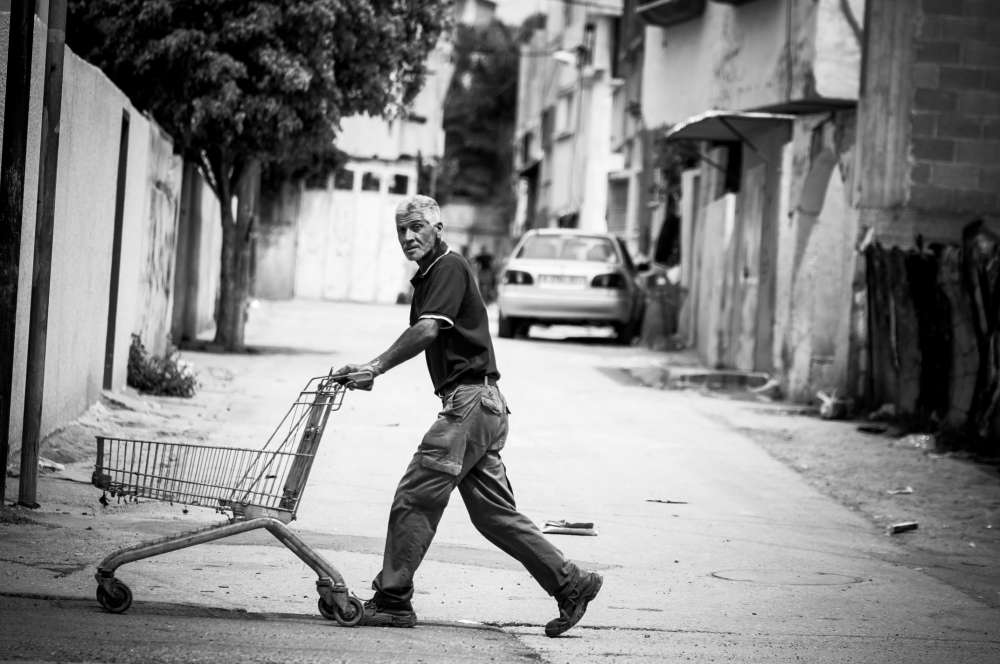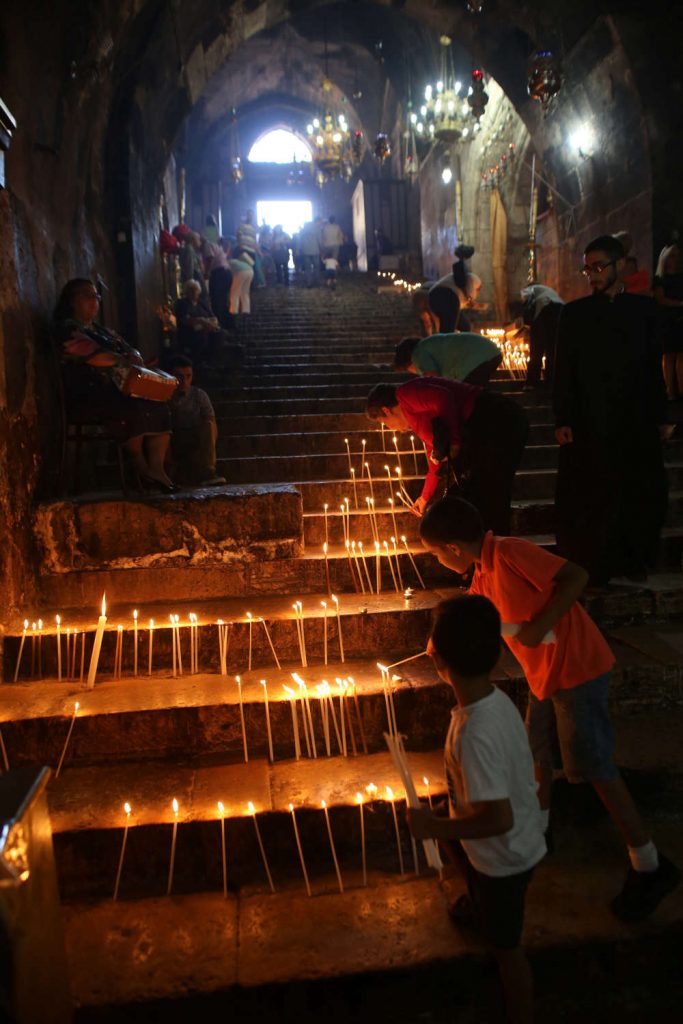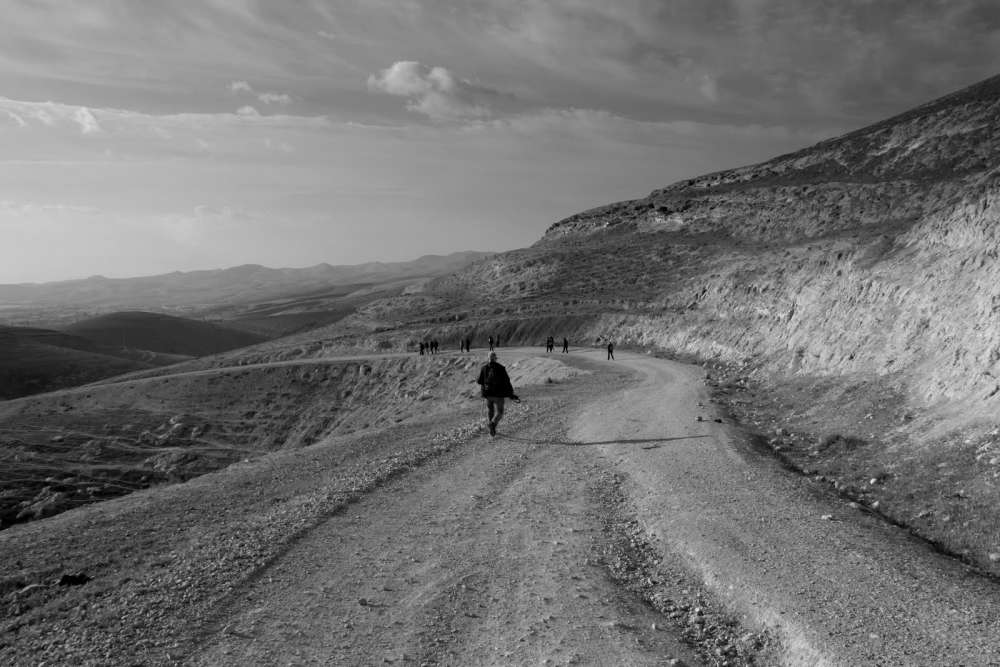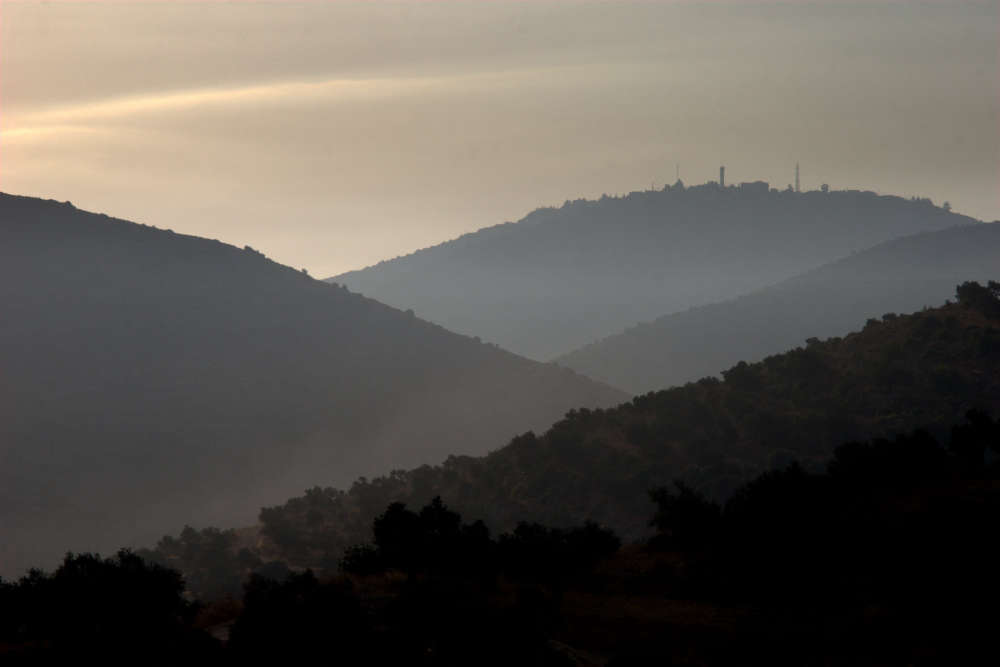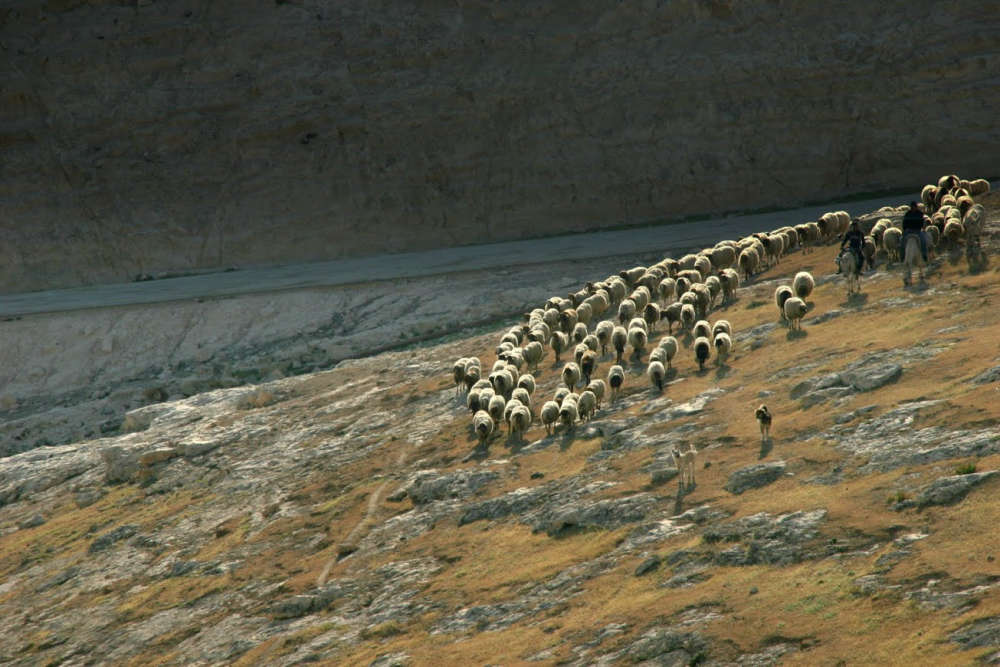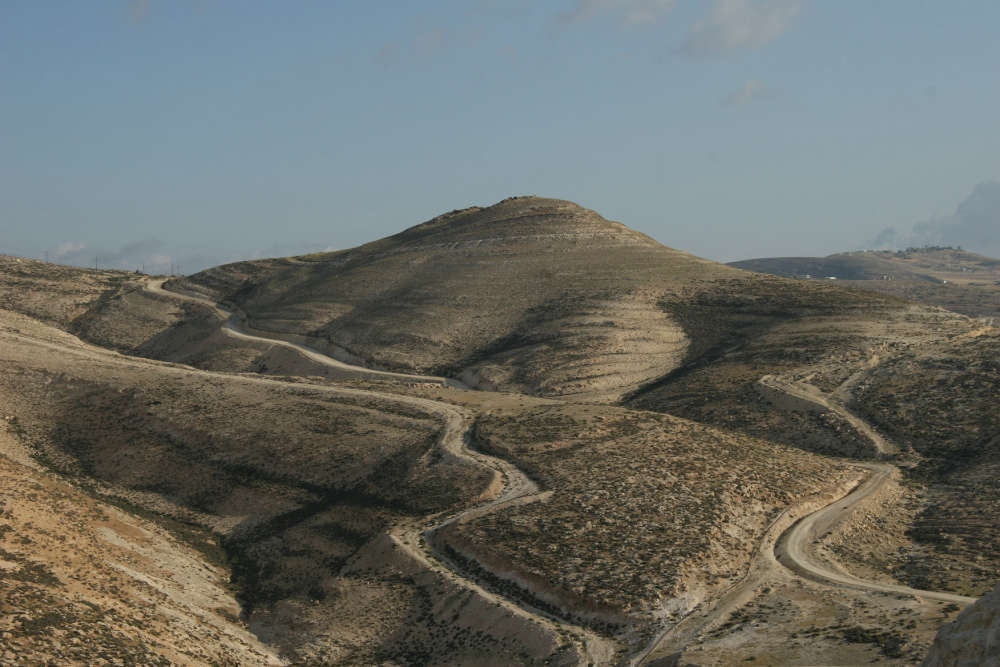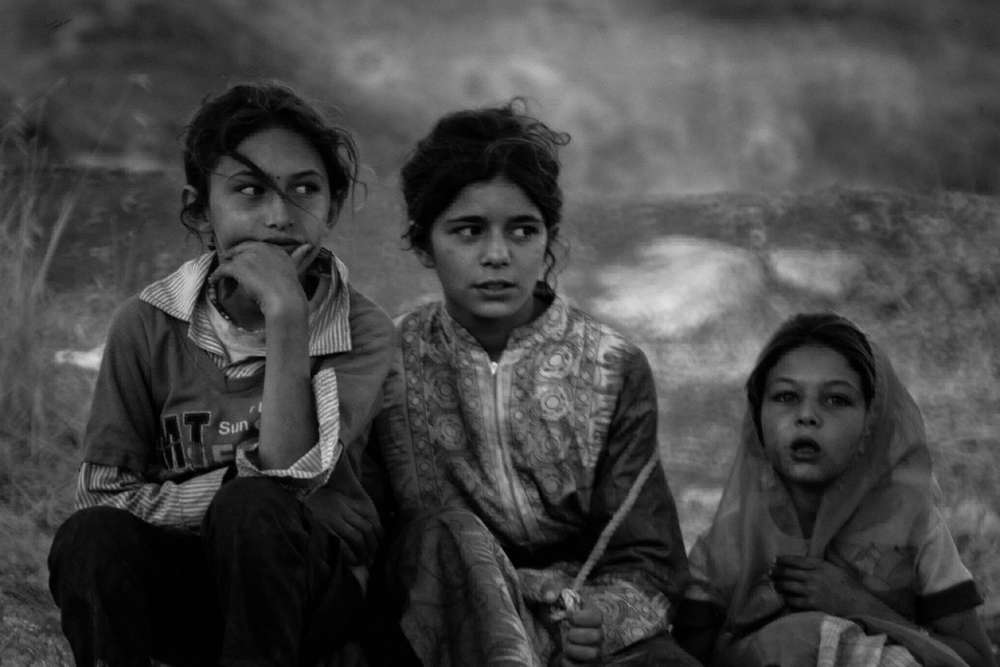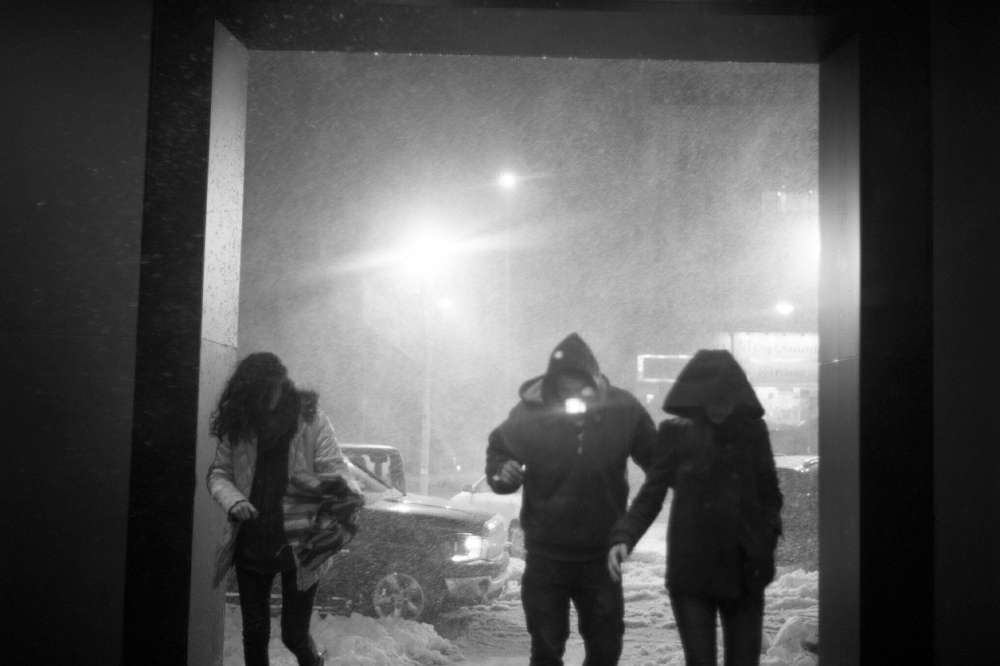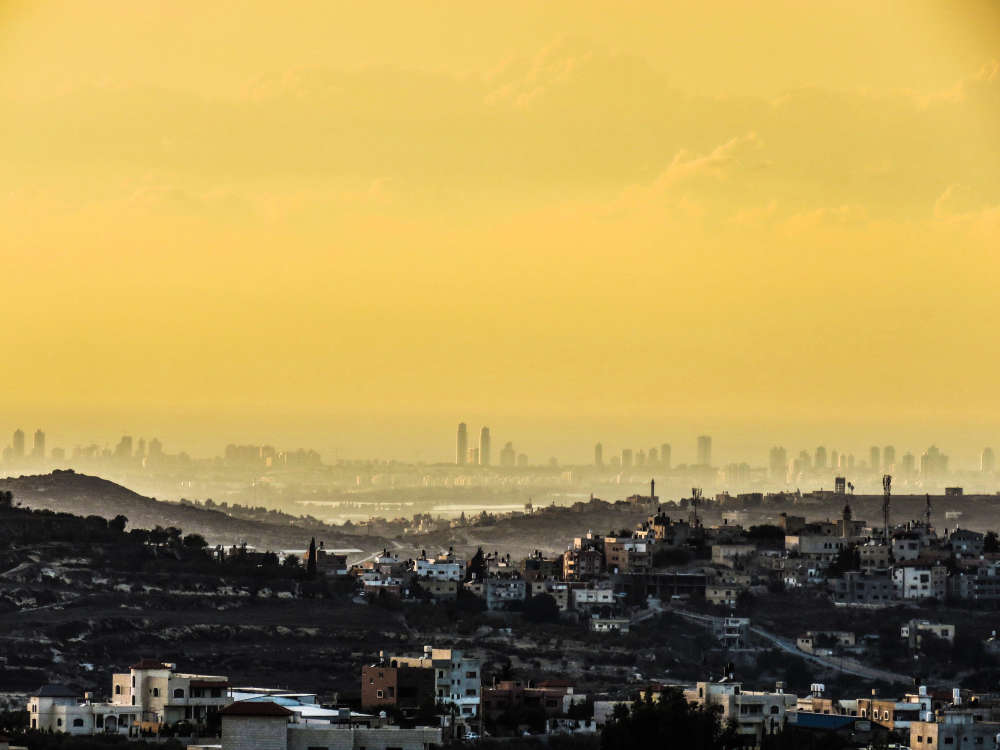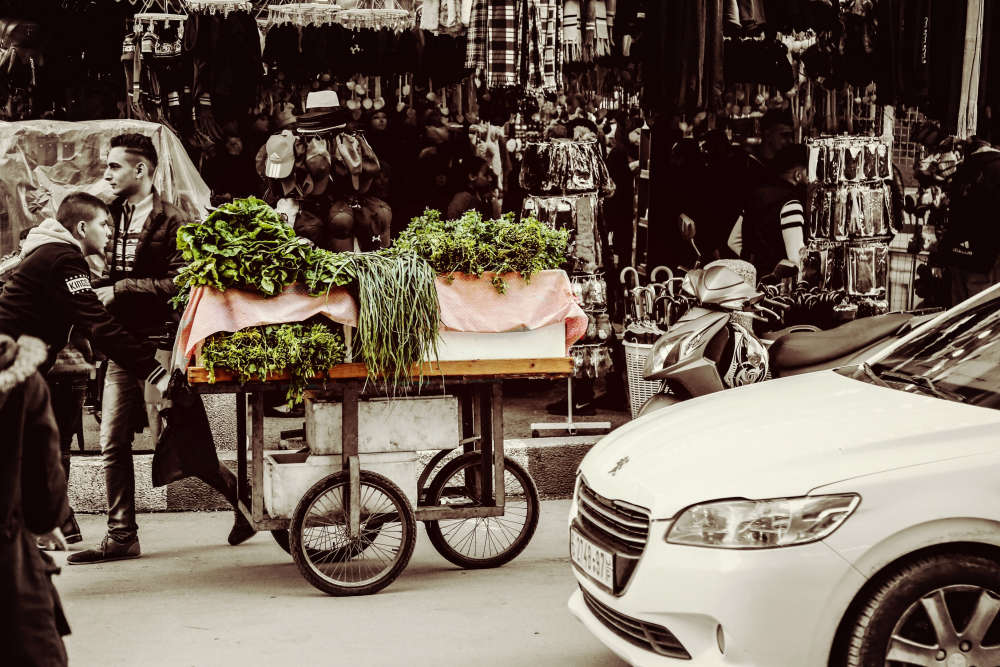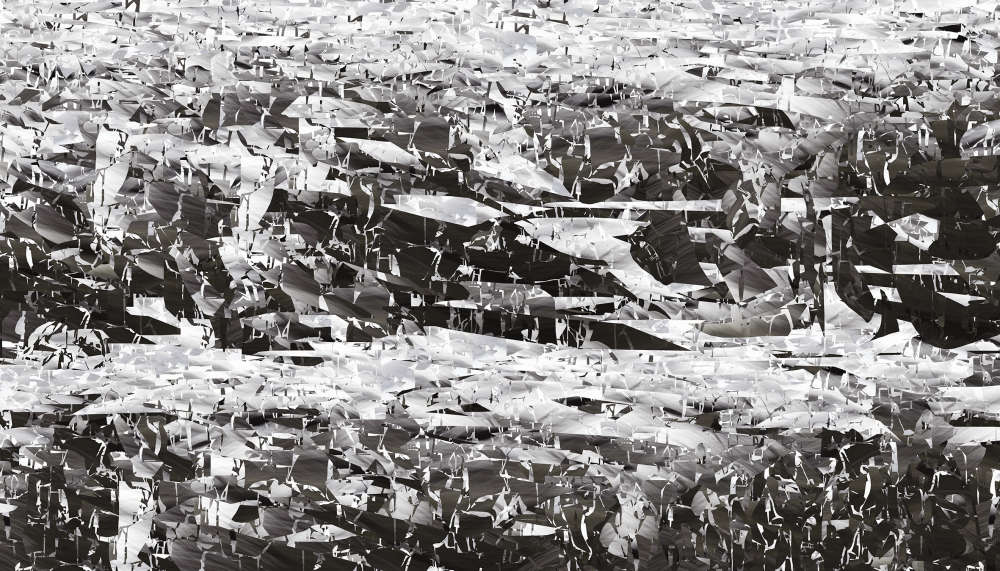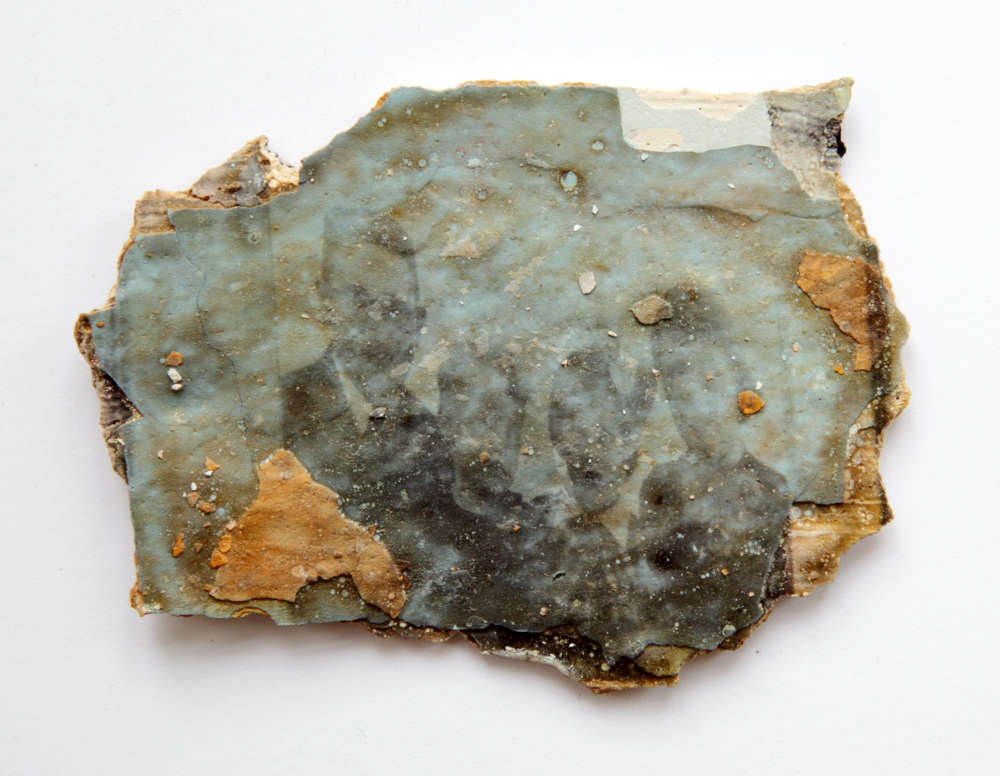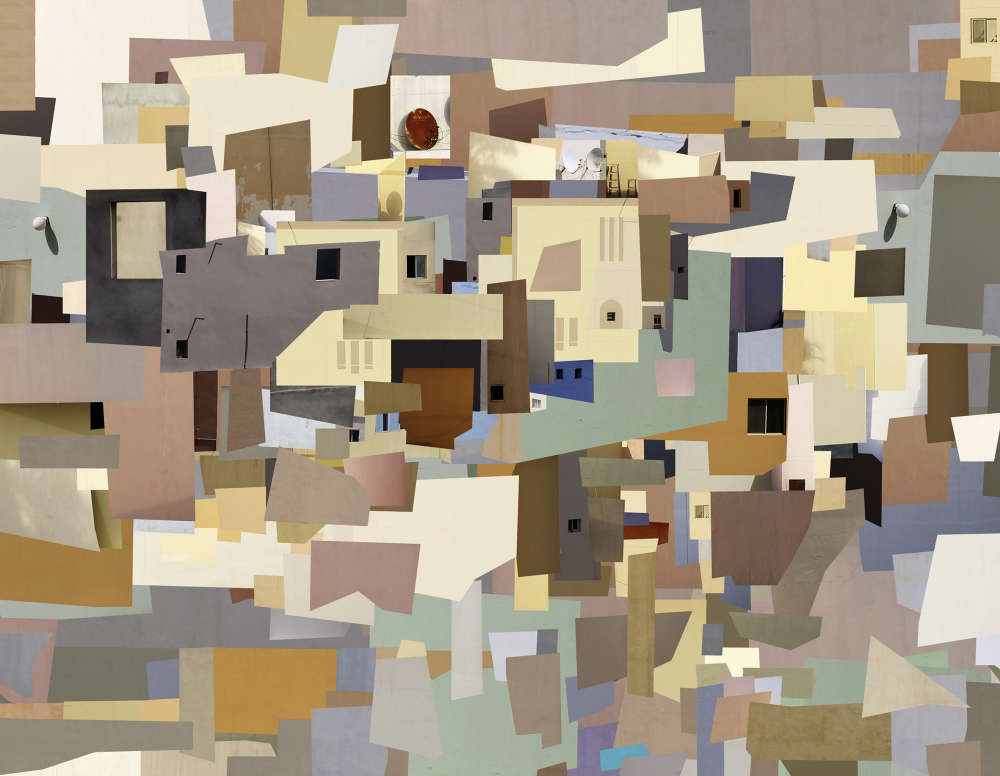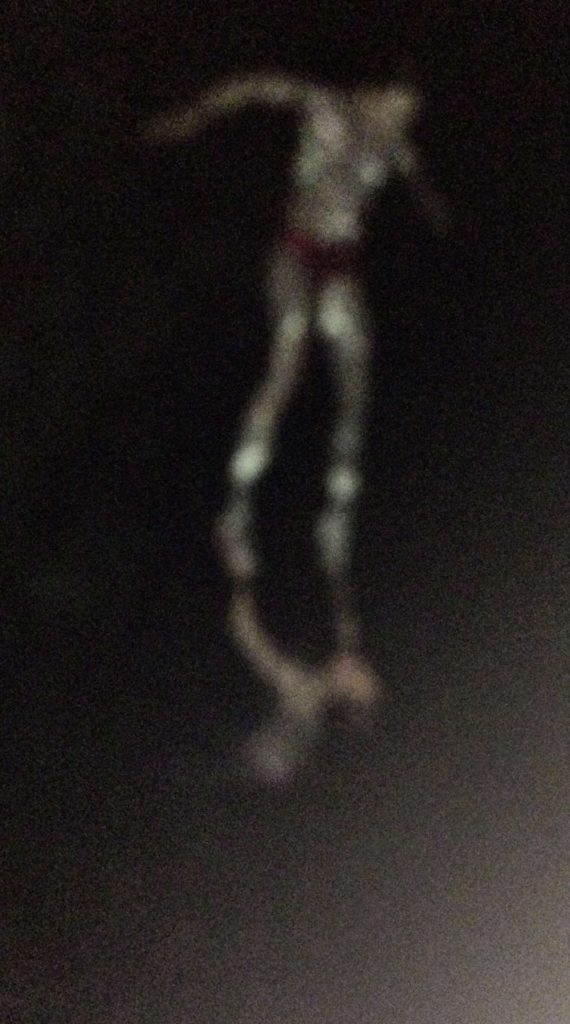The idea behind the issue is to promote Palestine through photography. We sent invitations to several photographers to email us their favorite photo of two on a number of topics that included children, Gaza and its sea, street life, landscapes, expressions, abstract photography and a few other topics. We also asked the photographers to send an elaborate caption to describe each photo, along with a short biography on him/herself. Almost all were gracious enough to send the material we asked for. We are proud of our photographers and their work which you can see below.
Rula Halawani
From the series Jerusalem Calling (originally presented with soundtrack; funded by the Arab Fund for Arts and Culture).
Maysa Alshaer
The picture above shows part of an old window that is in the cultural center called the Duke’s Diwan, considered to be among the oldest Omani houses in Amman. Formerly the residence of Duke Mukhyber, its doors are open to artists and visitors today. I visited the place in 2012 during a beautiful cultural evening.
Ahed Izhiman
Ahmed Ghaith
The Ottoman tunnel is carved into a mountain near Bila’a, to the east of Tulkarem, penetrating it from beginning to end. Given the beauty of the tunnel and the surrounding landscape, and the skill of construction, this archeological site is popular with young people, families, and school students alike. The tunnel was dug during the reign of Ottoman Sultan Abdul Hamid al-Thani, between 1876 and 1909, as part of an ambitious railway project that aimed to facilitate the travel of pilgrims from the Levant to the Hijaz (Saudi Arabia).
“Palestine is free” reads the graffiti beside the door of a shop in the old town of Hebron that reflects the impact of the prolonged Israeli occupation on the area.
Nayef Hammouri
We set up our equipment at sunset and waited. At around 5 a.m., when the lunar eclipse was complete, and the blood moon was exactly above the mountain, we gave the guys who were two kilometers away the signal to move. Timing was essential, as the moon was passing quickly.
After an arduous trip to reach Jerusalem – the first time we were allowed to enter in ten years – to document the city during the month of holy Ramadan, this photo was taken just after sunrise in the courtyard of the Dome of the Rock. Flocks of birds fly from dome to dome and wall to wall, representing the freedom that Al-Quds desperately needs.
Alaa Badarneh
This 90-year-old Palestinian, smoking an argila (hookah) in Palestine’s oldest coffee shop, has been coming here every day for over 70 years. Sheikh Qasim Coffee Shop is an historical landmark in the old city of Nablus; it has retained its traditional décor throughout three consecutive generations of owners. Prior to 1948, in addition to the regular local hakawatis (storytellers), many famous Egyptian singers and actors, such as Asmahan, Farid Al-Atrash, Tahia Karioka, Lubluba, Mohammad Fawzi, Mahiha Yusri, and Raja’ Abdo, enjoyed drinking coffee here when visiting Palestine.
Tamara Habash
Shareef Sarhan
To engage in photography is to paint with light, stealing a moment from time before it becomes a moment of the past. Working with all your senses, you use that black, inanimate box to express life through colored rays, ensuring that memories of the past remain parts of your daily life. Every image you take tells a story and preserves history for whoever comes after us, letting them know that this land had people, a life, a dream, and the hope for freedom. Despite the siege, my images today transcend borders and checkpoints and reach the world at large. A picture every day means one day closer to freedom.
Rasha Asfour
Elias Halabi
Visit Palestine: A Palestinian elder from Jerusalem is holding a Visit Palestine poster in front of his shop in Jerusalem’s Old City. Other posters and photos in the shop vary from originals to copies of old photographs and posters of Jerusalem, documenting and illustrating the rich history of the city.
Like father, like son: A Palestinian shepherd and his son are leading their sheep home after a long day in the desert near Al-Rashaydeh in the Jerusalem hills. This photo was taken during a sunset hike with Masar Ibrahim Al-Khalil
Mohamed Badarne
Having moved from Yarmouk Refugee Camp to the outskirts of Berlin, Tariq holds on to his dream: Carrying the Palestinian flag, he yearns to return to Palestine.
What drives me to take pictures that do not show martyrs, blood, barriers, checkpoints, or guns? Am I trying to escape to a fantasy world without occupation? Or do I refuse to produce pictures that comply with the world’s expectations? I am searching for what the occupation cannot accomplish: Killing the Palestinian spirit of hope. My photos cannot convert reality. But during the moments when we do not feel the occupation, rather than feeling guilty, we should cherish and celebrate the sense of freedom.
Motaz Alaaraj
Amani AlSharqawi
A wild plant rising high against the sunlight, taken in color and then modified to black and white. Most of the colors have been removed, leaving only the original colors of the white and yellow blossoms.
Nabil Darwish
Sometimes even the harshest environment cannot seep into the cracks of a living soul. We walk on this earth with pride. This pride distinguishes and differentiates us; it defines who we are. Sometimes, pride is all we have. From the series Pride, Qalqiliya, West Bank.
Jack Rabah
Known to Muslims and Christians as Sitna Maryam (Our Lady Mary), this church is carved into bedrock at the bottom of the Mount of Olives in Jerusalem. Every year during the feast of the Dormition of the Virgin Mary, pilgrims bring bundles of candles to illuminate the stairs that lead all the way down to the tomb of the virgin. Eastern Christians believe that her body was lifted to heaven shortly after she died. Despite movement restrictions, the separation wall, and checkpoints, I try to take my family on this annual pilgrimage, and afterwards, we bring home some tasty Jerusalem ka’ik ib simsim (sesame-covered bread).
Emile Ashrawi
Ashraf Dowani
The first photo is part of a collection I created in 2010 through my studies in Jordan, when I produced a photo album of a gypsy family who lives in Amman on Airport Street. I was attracted by the beauty of these children and the simplicity in which they were living. With a 500mm telephoto lens I was able to capture some natural moments. This was an exciting experiment, as I was able to capture the subject without being a distraction.
The second photo is a snapshot of my friends in Jordan, taken a few years ago during a snowstorm, when I experimented with shooting in back light.
Muayad Reehan
A street vendor in Nablus, the commercial center of the northern West Bank. Many of the youth in Nablus and the surrounding villages must be creative in securing an income for themselves and their families. By modifying the colors, I was able to bring out the green vegetables and herbs that represent our connection to our land and traditional food.
Steve Sabella
Raed Abughazaleh
Olive groves have been dotting this landscape for hundreds of years.
The open fields surrounding the village of Ein Qiniya near Ramallah are some of the last remaining natural refuges in the area, supporting a wide variety of native flora and fauna. They also create a natural escape for Ramallah’s residents from the city’s growing burdens. Unfortunately, this rich resource is disappearing fast due to rapid urbanization, and in a hundred years Ein Qiniya will be filled with roads and buildings. I want to document these fields now, while they still exist in all their beauty and grace.

